
The Sinhalese people, also known as the Sinhalese are an Indo-Aryan ethno-linguistic group native to the island of Sri Lanka. Historically, they were known as the Sinhala or the Lion People. They are the largest ethnic group in Sri Lanka, constituting about 75% of the Sri Lankan population and number more than 15.2 million.
The music of Sri Lanka has its roots in five primary influences: ancient folk rituals, Hindu religious traditions, Buddhist religious traditions, the legacy of European colonisation, and the commercial and historical influence of nearby Indian culture—specifically, Kollywood cinema and Bollywood cinema.

Mahāvaṃsa is the meticulously kept historical chronicle of Sri Lanka until the period of Mahasena of Anuradhapura. It was written in the style of an epic poem written in the Pali language. It relates the history of Sri Lanka from its legendary beginnings up to the reign of Mahasena of Anuradhapura covering the period between the arrival of Prince Vijaya from India in 543 BCE to his reign and later updated by different writers. It was first composed by a Buddhist monk named Mahanama at the Mahavihara temple in Anuradhapura in the 5th or 6th-century CE.

Theravada Buddhism is the largest and official religion of Sri Lanka, practiced by 70.2% of the population as of 2012. Practitioners of Sri Lankan Buddhism can be found amongst the majority Sinhalese population as well as among the minority ethnic groups. Sri Lankan Buddhists share many similarities with Southeast Asian Buddhists, specifically Myanmar Buddhists and Thai Buddhists due to traditional and cultural exchange. Sri Lanka is one of five nations with a Theravada Buddhist majority.
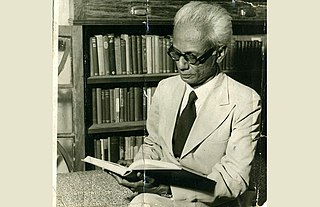
Lama Hewage Don Martin Wickramasinghe, was a Sri Lankan journalist and author. His books have been translated into several different languages. Martin Wickramasinghe is often acclaimed as the father of modern Sinhala literature.

The culture of Sri Lanka mixes modern elements with traditional aspects and is known for its regional diversity. Sri Lankan culture has long been influenced by the heritage of Theravada Buddhism passed on from India, and the religion's legacy is particularly strong in Sri Lanka's southern and central regions. South Indian cultural influences are especially pronounced in the northernmost reaches of the country. The history of colonial occupation has also left a mark on Sri Lanka's identity, with Portuguese, Dutch, and British elements having intermingled with various traditional facets of Sri Lankan culture. Additionally, Indonesian culture has also influenced certain aspects of Sri Lankan culture. Culturally, Sri Lanka possesses strong links to both India and Southeast Asia. For over 2,500 years, India and Sri Lanka have nurtured a legacy of historical, cultural, religious, spiritual, and linguistic connections.
Sri Lankan literature is the literary tradition of Sri Lanka. The largest part of Sri Lankan literature was written in the Sinhala language, but there is a considerable number of works in other languages used in Sri Lanka over the millennia. However, the languages used in ancient times were very different from the language used in Sri Lanka now.
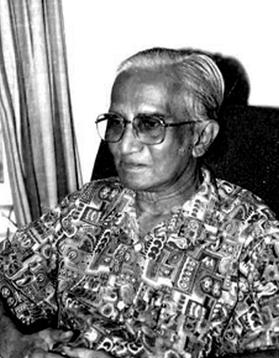
Veditantirige Ediriweera Ranjitha Sarachchandra, popularly known as Ediriweera Sarachchandra Sinhala: එදිරිවීර සරච්චන්ද්ර), was a Sri Lankan playwright, novelist, poet, literary critic, essayist and social commentator. Considered as the premier playwright in Sri Lanka, Sarachchandra produced several critically acclaimed theatre plays in a career spanned for more than four decades. He also served as a senior lecturer at the University of Peradeniya for many years and as Sri Lankan Ambassador to France from 1974 to 1977.
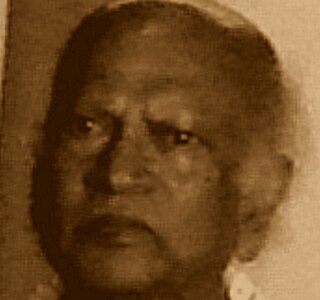
Siri Gunasinghe was a Sri Lankan academic, poet, Sanskritist, art historian, author and filmmaker. He played a crucial role in honing the creativity of free Sinhala poetry. Gunasinghe was one of the most important advocates of the use of spoken language instead of the literary language in Sinhalese literature.
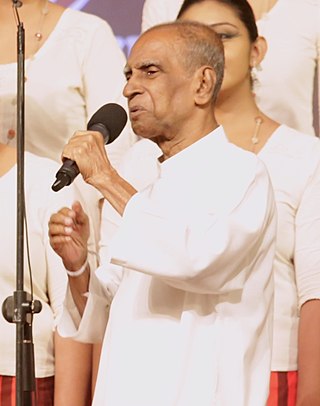
Sri Lankabhimanya Wannakuwattawaduge Don Albert Perera, better known by his adopted name Amaradeva, was a prominent Sri Lankan Sinhalese vocalist, violinist and composer. Primarily using traditional instruments like sitars, tablas and harmoniums, he incorporated Sinhala folk music with Indian ragas in his work. Many consider his contribution to the development of Sinhala music as unmatched; hence, he is occasionally cited as the "Maestro of Sri Lankan Music".

There are several styles of classical and folk dance in Sri Lanka.

Sinhalese New Year, generally known as Aluth Avurudda in Sri Lanka, is a Sri Lankan holiday that celebrates the traditional New Year of the Sinhalese people and Tamil population of Sri Lanka. It is a major anniversary celebrated by not only the Sinhalese and Tamil people but by most Sri Lankans. The timing of the Sinhala Tamil New Year coincides with the new year celebrations of many traditional calendars of South and Southeast Asia. The festival has close semblance to the Tamil New year and other South and Southeast Asian New Years. It is a public holiday in Sri Lanka. It is generally celebrated on 13 April or 14 April and traditionally begins at the sighting of the new moon.

Gunasena Galappatty was a Sri Lankan dramatist, director, producer, and Sinhala radio play writer regarded as the pioneer of suspense drama in Sri Lanka.
John de Silva was a Sri Lankan playwright.
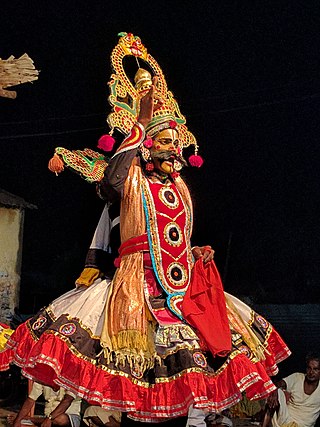
Terukkuttu is a Tamil street theatre form practised in Tamil Nadu state of India and Tamil-speaking regions of Sri Lanka. Terukuttu is a form of entertainment, a ritual, and a medium of social instruction. The terukkuttu plays various themes. One theme is from the Tamil language versions of the Hindu epic Mahabharata, focusing on the character Draupadi. The terms Terukkuttu and Kattaikkuttu are often used interchangeably in the modern times; however, historically the two terms appear to have distinguished, at least in certain villages, between two different kinds of performance: while Terukkuttu referred to mobile performances in a procession, Kattaikkuttu denotes overnight, narrative performances at a fixed performance space.

Lynn Alton de Silva was a Sri Lankan theologian and Methodist minister. He was the founder and editor of one of the first theological journals on Buddhist-Christian encounter called Dialogue (1961–1981), chief translator for the revision of the Old Testament of the Sinhalese Bible published as New Sinhala Bible (1973–1982), and director of the Ecumenical Institute for Study and Dialogue (EISD) in Sri Lanka (1962–1982). Lynn de Silva is widely regarded as one of the foremost Christian practitioners of Buddhist-Christian dialogue in Sri Lanka, and also as one of the pioneers in this dialogue.
Maha Sona or Maha Sohona is a yaka in Sinhalese folklore, who is said to haunt afterlife. The name Maha Sona means " the greatest demon" or "god or demon of the cemetery" in the Sinhala language. It is the most feared god or demon in Sri Lanka. Originally a giant who had been defeated and decapitated in a duel by another giant named Gotaimbara, Maha Sonaa has had his head replaced with that of a bear or tiger. He is believed to kill people by crushing their shoulders and also by afflicting illnesses. Traditional exorcism rituals are performed to repel the demon in such cases. Sri Lanka Army's Long Range Reconnaissance Patrol units are popularly known as the "Maha Sohon Brigade", named after this demon.
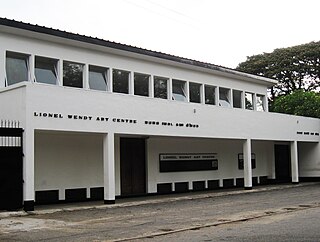
The Lionel Wendt Art Centre is a major art centre and theatre in Colombo, Sri Lanka, dedicated to the memory of Sri Lankan photographic artist Lionel Wendt. It combines live theatre and art exhibition, with two exhibition galleries and two theatres. It is managed by a trust established by an Act of Parliament.

Kala Suri Somalatha Subasinghe was a Sri Lankan actress, playwright, theatre director and educator from Sri Lanka. She received both the Kala Suri and the Kala Keerthi in recognition of her contribution to Sri Lankan theatre.
Kala Suri Attanayake Mudiyanselage Podi Manike, popularly as Manike Attanayake, is an actress in Sri Lankan cinema, theater and television. She is best known for the role in television serial Palingu Manike. In 1987, she was honored with "Kalasuri", becoming the youngest Sri Lankan to win that award.
















